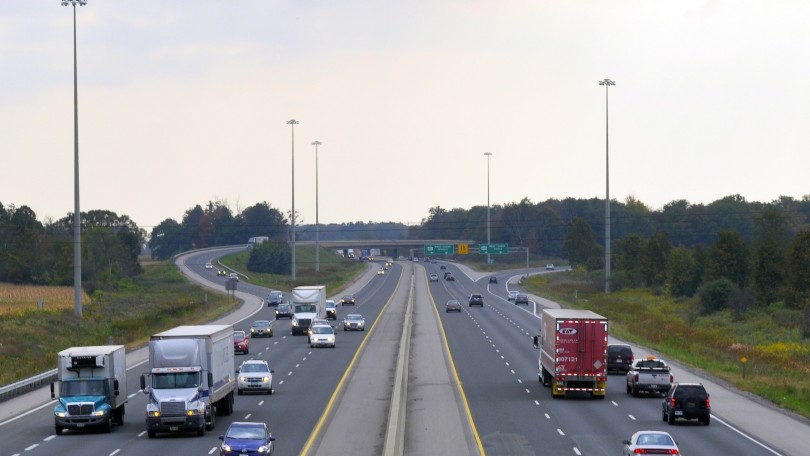Innovation Brief: The Changing Nature of State-Federal Relations in Transportation
Excerpted from remarks by Ken Orski at the Legislative/Fiscal Plenary Luncheon, Council of Governments’ Southern Legislative Conference, Little Rock, Arkansas, July 27, 2014
(Ed. note: On July 31, Congress approved a $10.8 billion 10-month “patch” to the Highway Trust Fund, thus averting what could have become significant delays in state reimbursements during the height of the construction season. The path toward the final vote took a circuitous route. The bill had been originally approved by the House by a vote of 367-55 on July 15, with only 10 Democrats and 45 Republicans voting against it. White House endorsement of the Republican-sponsored bill no doubt helped to smooth the way for a bipartisan vote. But the Senate’s initial action was to amend the House bill in favor of a shorter extension through December and a different funding approach. By so doing, certain Senate Democrats hoped it would be easier for Congress to pass a multi-year bill in the post-election lame duck session. However, largely for this reason the House rejected the Senate amendments and sent the bill back to the Senate stripped of the Senate language. With the House poised to adjourn for a five-week summer recess, the Senate had little choice but to accept the House version of the bill and its May 2015 deadline. Final Senate vote was 81-13)
…What will happen after next May is anybody’s guess. A six-year surface transportation measure that transportation stakeholders want, would require roughly $330 billion to maintain current (FY 2014) spending levels. But Trust Fund revenue and interest over the same period is projected by the Congressional Budget Office to bring in only $230 billion—leaving a truly staggering funding gap of $100 billion.
The only feasible way to raise this kind of money would be to very substantially increase the federal gas tax—a solution favored by many in the transportation industry. But a boost in the gas tax remains a political anathema. Only three Senators— Democrats Tom Carper of Delaware,and Chris Murphy of Connecticut and Republican Bob Corker of Tennessee— and one House Democrat — Earl Blumenauer of Oregon— have come out publicly in favor of raising the federal gas tax. On the other hand, House Majority Leader Kevin McCarthy— and the White House— recently reiterated their opposition. There is a good reason for their position: a Gallup poll in April 2013 found that two-thirds of Americans are against raising the gas tax –even if it went toward infrastructure improvements.(ed.: A recent Associated Press poll confirmed these results).
So what is the most probable outcome? With the Republicans likely to control the Senate next year and the presidential elections casting a shadow over any new proposal to raise taxes, there will be a huge temptation for Congress to kick the can down the road once again — beyond the presidential election and into the next Congress. Remember, it took three years and eight short-term extensions to pass the last reauthorization, MAP-21!
States Are Striking Out On Their Own
Fortunately, many individual states are trying to compensate for the lack of congressional action on long term funding by raising additional revenue of their own. Our survey has identified more than 30 states that have launched transportation-related fiscal initiatives in the past two years.
Some states have increased local fuel taxes (MD, WY, MA, VT, NH). Others have introduced fuel taxes at the wholesale level (e.g. PA), floated toll revenue bonds (e.g. OH, MA) or raised highway tolls (e.g. DE). Still others have enacted dedicated sales taxes for transportation —as your host state did in November 2012. As Sen. Roger Wicker (R-MS) observed, states have become veritable “laboratories for fiscal experimentation.”
At the local level, things have not been standing still either. A growing number of local jurisdictions are approving bond issues and dedicated sales taxes to support local transportation improvements.
Collectively, these measures are generating billions of additional dollars for state and local transportation programs— and making up for the absence of increased federal funding. As the latests congressional votes suggest, the states’ revenue initiatives also may have reduced the sense of urgency to act on a long term funding bill at the federal level. Indeed, for a growing number of states that have secured a stable multi-year source of funding for their transportation programs, a long-term federal transportation authorization no longer is an imperative.
Financing Major Transportation Investments
To further make themselves fiscally independent, many states have turned to financing large-scale construction projects with long term credit—they are borrowing front-end capital and repaying it over extended periods of time with dedicated sources of revenue. To raise capital, states are using a variety of financing tools such as TIFIA loans, Private Activity Bonds, toll revenue bonds and private equity contributions.
As many as 22 jurisdictions have done so in the last several years. This includes several SLC members, such as Texas (North Tarrant Express project in Fort Worth), Florida (Interstate 4 reconstruction in Orange County), Virginia (Interstate 95 Managed lanes) and North Carolina (Interstate 77 managed lanes north of Charlotte).
In turning to long-term credit to finance major transportation investments, states are following in the footsteps of the private sector. All of the nation’s privately owned infrastructure— railroads, pipelines, telecommunications networks, power plants and refineries— are funded with loaned capital. So are many transportation improvements at the local level—using tax-exempt municipal bonds. Now, state roads and bridges are joining the ranks of infrastructure projects that are increasingly financed with long term investment capital.
Another way in which states are procuring costly new facilities is by entering into public-private partnerships These allow states to shift the burden of financing large-scale construction projects to private contractors and concessionaires. In the last two years six states have entered into such partnerships— with private contractors funding up front the cost of highway design and construction and getting repaid over time with so-called “availability payments.” More such partnerships are expected in the future as states gain familiarity with this type of financing arrangements.
In sum, states are not standing idly by, waiting for Congress to come to the rescue with more money. Instead, Governors, state legislatures and local governments are taking aggressive steps to make themselves less dependent on federal aid. They are increasing fuel taxes, passing local bond referenda, financing large-scale construction projects with long term credit, and entering into investment partnerships with the private sector. In other words, states are taking matters into their own hands and becoming masters of their own transportation destiny.
Rethinking State-Federal Relationship
Will the states’ growing fiscal independence— this de facto devolution as some call it— make the Highway Trust Fund superfluous? I doubt it —at least not in the foreseeable future. At an estimated $34 billion a year, federal fuel taxes provide the states with essential, hard to replace help in maintaining and modernizing the Interstate Highway System.
But big-ticket capital investments no longer will need to be funded with Trust Fund revenue. They will be increasingly financed with long-term capital. At least that’s the scenario envisioned by some visionaries looking for a permanent solution to the Highway Trust Fund crisis.
Shifting major capital expenditures out of the Trust Fund, they contend, would help align spending from the Fund more closely with incoming tax revenues as proposed in this year’s House Budget Resolution. This, in turn, would put an end to the recurrent Trust Fund shortfalls of the past decade, eliminate the need for periodic bailouts and make the Trust Fund structurally sound in a permanent way.
As for the states, greater fiscal independence will help them gain a substantially enhanced role in transportation — it will empower them to set their own spending priorities and do away with burdensome federal mandates. Conversely, increased state fiscal autonomy combined with continuing federal budgetary constraints, will lead de facto to a more limited, more precisely defined federal role in transportation. It’s an outcome that conservatives have long been urging and hoping for and one which, I suspect, will please many of you as well.
Let me conclude by commending Senator Norris for placing the issue of federalism in transportation on the Council of Governments’ policy agenda. I cannot think of a more effective way of signaling to congressional lawmakers that the time has come to seriously rethink the state-federal relationship in transportation. The message you are sending to Washington is clear: the times have changed and the existing revenue model, conceived in another era to fund the Interstate Highway system, no longer fits contemporary needs. Legislative reform is needed in the next Congress to strengthen decision-making authority of state governments and give local leaders more latitude to fund and manage their transportation programs on their own terms.Let us hope your voice will be heard.
Thank you for the chance to share these views with you.
###
The NewsBriefs are regularly published at www.infrastructureUSA.org ; They are occasionally posted at: www.newgeography.com; www.cascadiaprospectus.org; www.heartland.org; and the National Journal Transportation Experts Blog. A listing of all recent NewsBriefs can be found at www.innobriefs.com
— Posted on August 11, 2014 at 3:12 am by Ann

